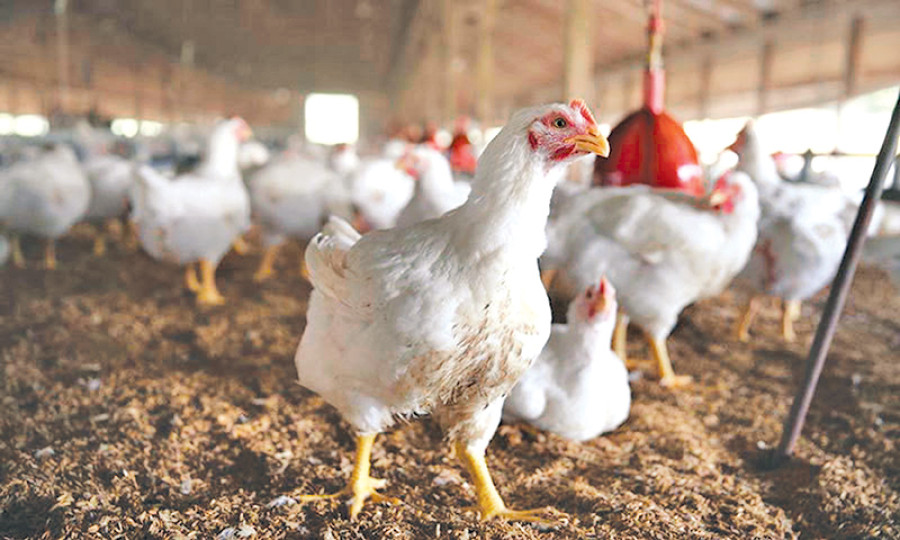Opinion
The fight against the superbug
With antibiotic resistant bacteria on the rise there is a danger to public health
Maneka Sanjay Gandhi
Antibiotic use has risen 36 percentn all countries over the last 10 years, a Princeton University study says– except in India, which has seen a rise of 62 percent and is now the largest consumer of antibiotics in the world.
When one is consistently exposed to an antibiotic over a period of time, the body develops a resistance to it. If these antibiotics were simply being taken by Indian people, then a public campaign and regulations for doctors could stop it.
But 70 percent of these antibiotics are being fed to sick chickens, who are then fed to Indians. This is an extremely dangerous situation. If the person has been eating chicken frequently, then when he really falls sick, the antibiotic he takes will have no effect on him. A person can then die of a common cold.
It is predicted that in a few years antibiotic resistant bacteria will have killed 1 crore people around the world and 47 lakh individuals will be from Asia. In India most antibiotics have stopped working on people.
New antibiotics are needed to provide a cure, but new ones are not easy to discover. Only two new antibiotics have been approved for use in the past 10 years, and one of these –ceftaroline– has already started facing the problem of resistance in the first year of its use.
Doctors are falling back on antibiotics that were used and discarded fifty years ago. Drugs that would otherwise not be recommended are now being seen as viable alternatives, as people have not yet developed resistance to them. One such antibiotic is colistin.
Colistin was introduced in the market in 1959 but was abandoned in the early 1980s due to undesirable effects, such as kidney failure and neurological toxicity. It can lead to temporary neurological disturbances such as numbness, tingling of the extremities, itching of the skin, dizziness, and slurring of speech.
Yet there is nothing more powerful available at the moment to fight infection. Extreme care must therefore be taken so people don’t develop resistance to this antibiotic too.
Unfortunately, that is exactly what is happening. Studies done in Indian hospitals in Delhi and Pune have shown that 5 percent of patients admitted after outbreaks of severe bacterial infection are resistant to colistin. How have they developed this resistance?
A recent example from China can help demonstrate: In 2015, a colistin-resistant gene in Chinese pigs was discovered. This discovery created panic in the global medical community, as this gene (mcr-1) was capable of creating widespread untreatable infections. It was found that rampant use of colistin in Chinese livestock farming had caused the spread of mcr-1. The gene was found in bacteria from animals and humans in more than 30 countries where Chinese pigs had been exported for consumption.
This is what has happened in India as well. When colistin fell out of favour for human use in the 1980s, the companies manufacturing it started selling it to piggeries in China and poultries in India. Colistin was banned for animal use in the West, so the companies targeted Asia, and tonnes of colistin were shipped to India, Vietnam, South Korea and Russia every year for veterinary use.
Five pharmaceutical companies in India are openly advertising products containing colistin as a growth promoter for animals. Two companies are manufacturing colistin locally. We are importing over 150 tonnes of it every year.
Indian poultry farms are using colistin and going completely unchecked. Why? Because they keep their chickens so badly in small battery cages—as reported in the Law Commission report on poultries—that they need antibiotics to prevent them from dying before they can be killed. And, as the chickens become resistant to gentle antibiotics, the poultry owners are using more and more dangerous drugs to keep them alive. Already Indians are indirectly ingesting the largest amount of antibiotics. This is predicted to increase 5 times by 2030.
Not just chicken (and pig) eaters are now found with colistin resistant genes, colistin finds a number of ways to reach us. Colistin resistant bacteria transfer through the air from these farms and through workers at these poultries. Flies, that sit on the faeces of chicken, carry the bacteria with them for long distances. Colistin in the faeces spreads into the soil and surrounding water bodies, thus seeping into agricultural produce, grown in the area, as well as the water supply.
With a population density like ours, even one person catching an antibiotic-resistant infection can lead to an epidemic. We are on the cusp of a public health disaster. The slow way is to generate awareness among consumers about the dangers of colistin. But what can they do? The government needs to act.
Poultry farms need to be ordered to immediately stop the use of colistin and all other antibiotics in their production systems. China has banned colistin use. Antibiotics as growth promoters were banned in the E.U. in 2006, and made illegal in the U.S. in 2017. India has refused to do it, since profit making is more important than public interest. But as long as none of you are complaining, government takes no action.
To join the animal welfare movement contact [email protected], www.peopleforanimalsindia.org




 15.12°C Kathmandu
15.12°C Kathmandu









%20(1).jpg&w=300&height=200)

